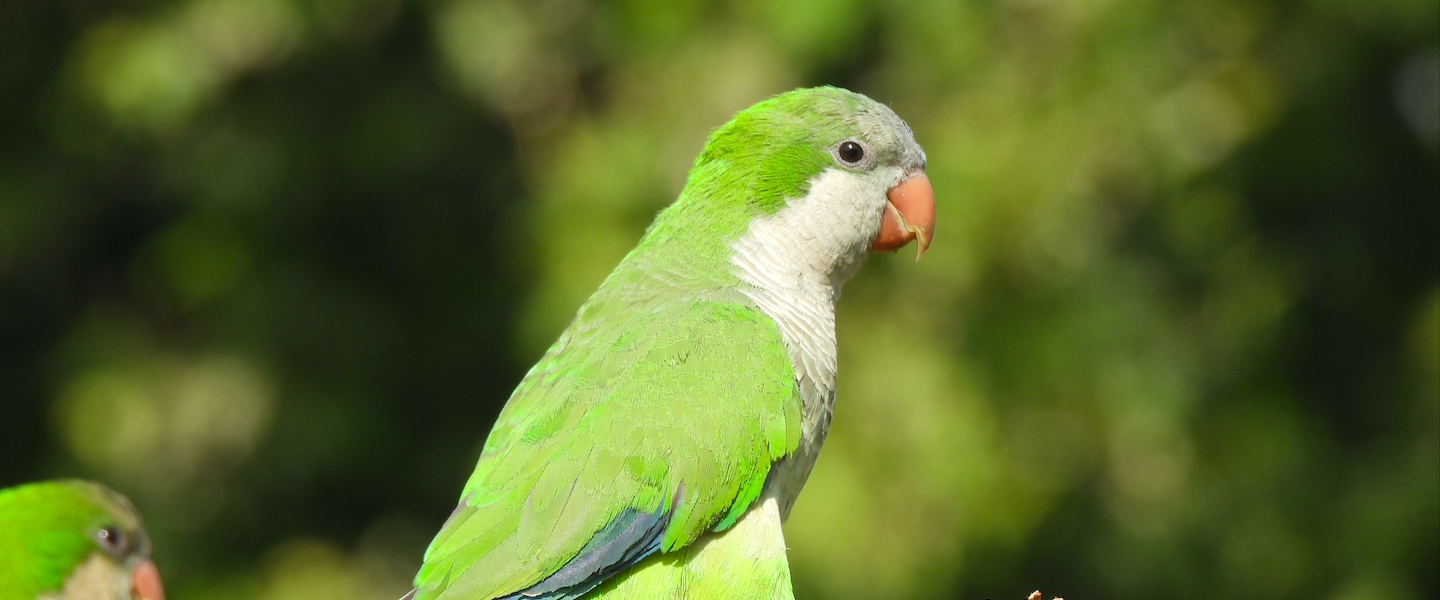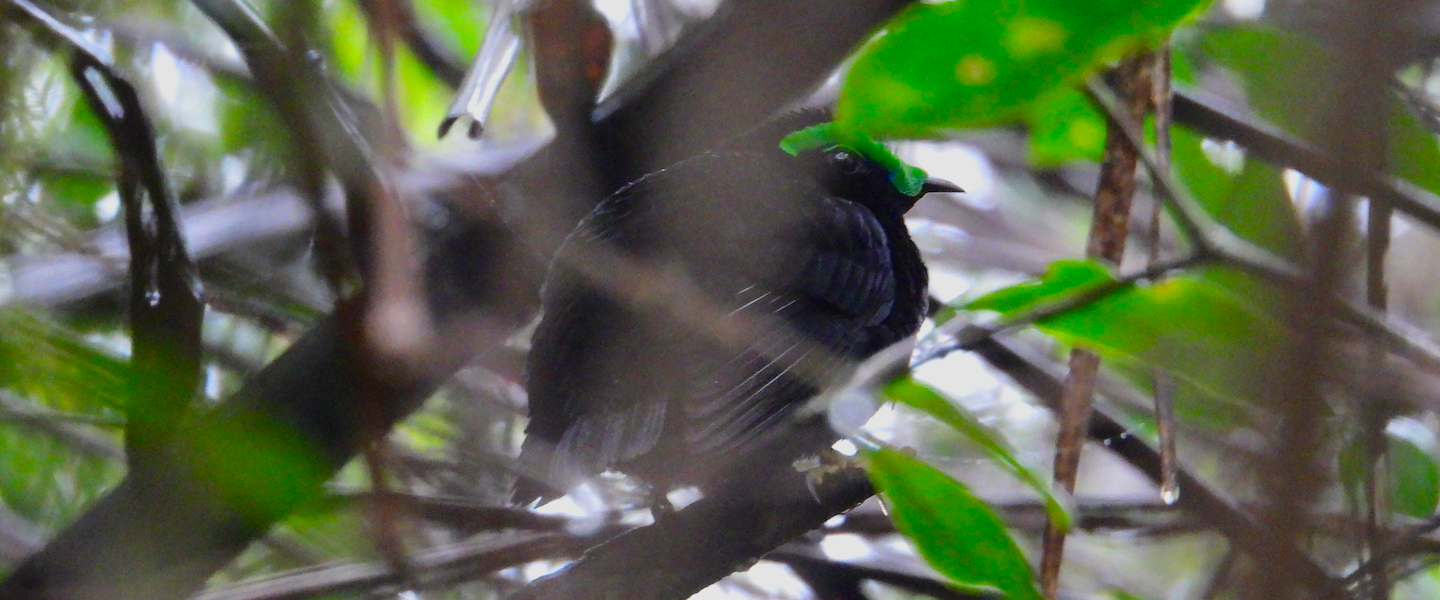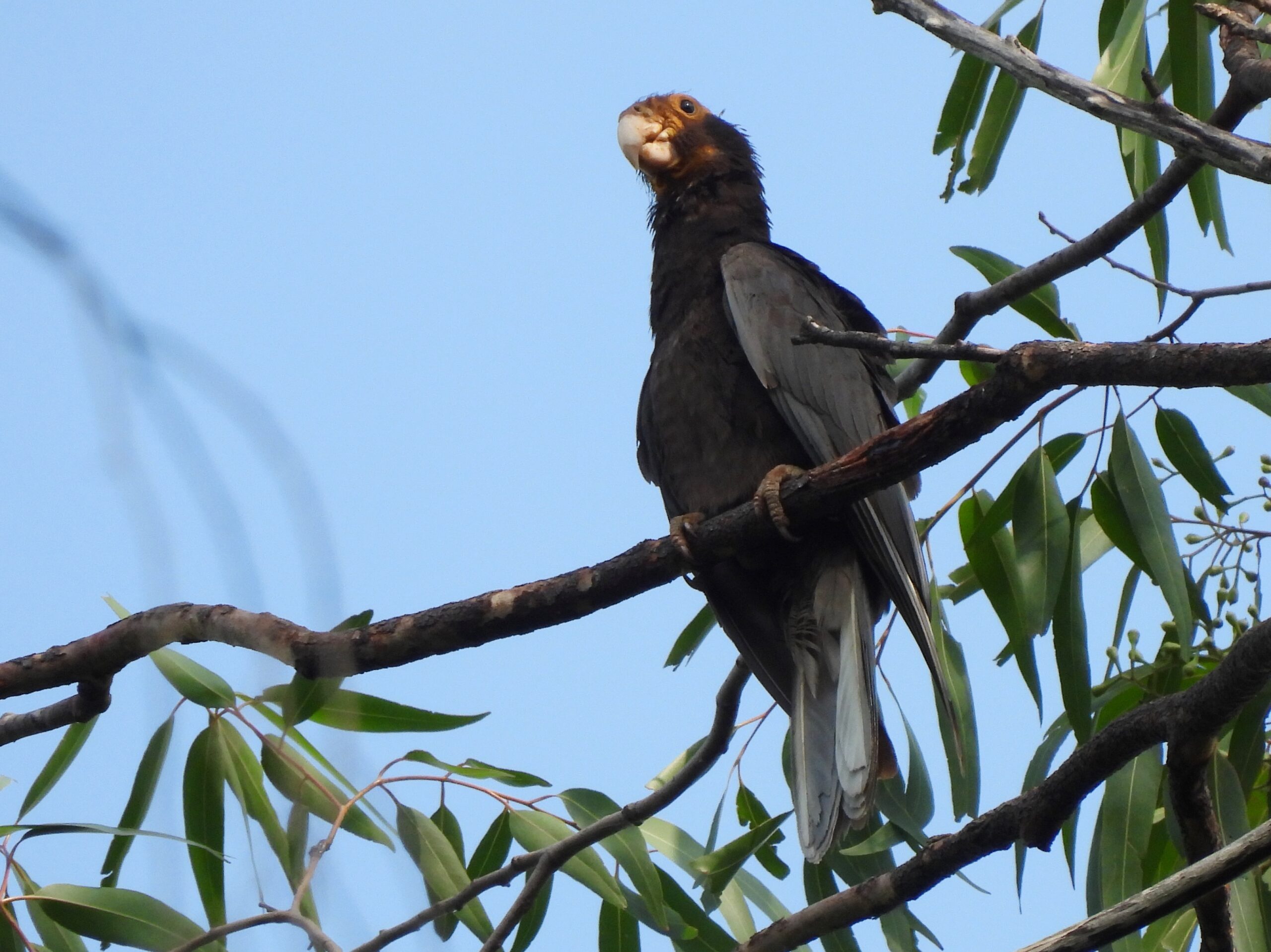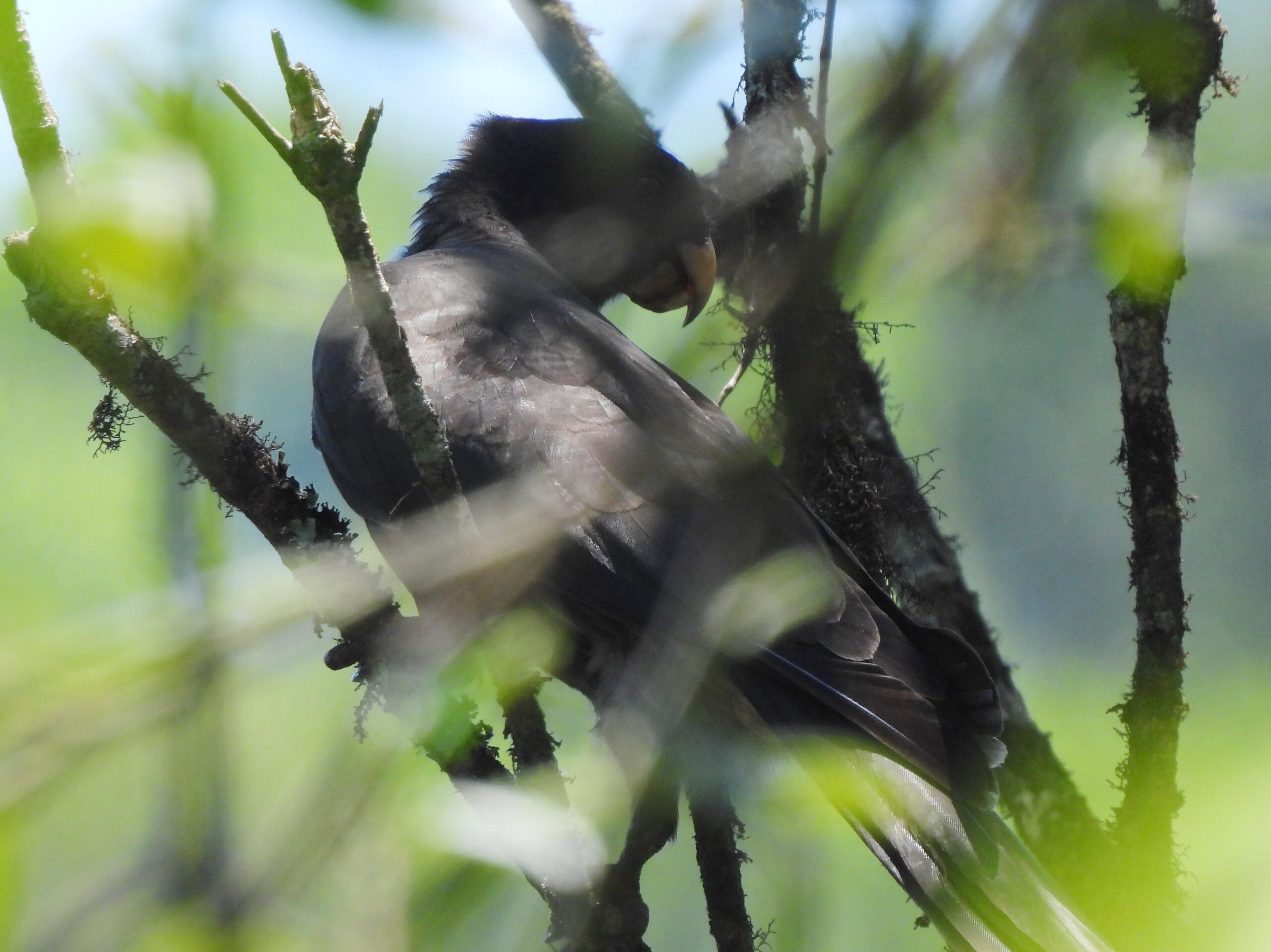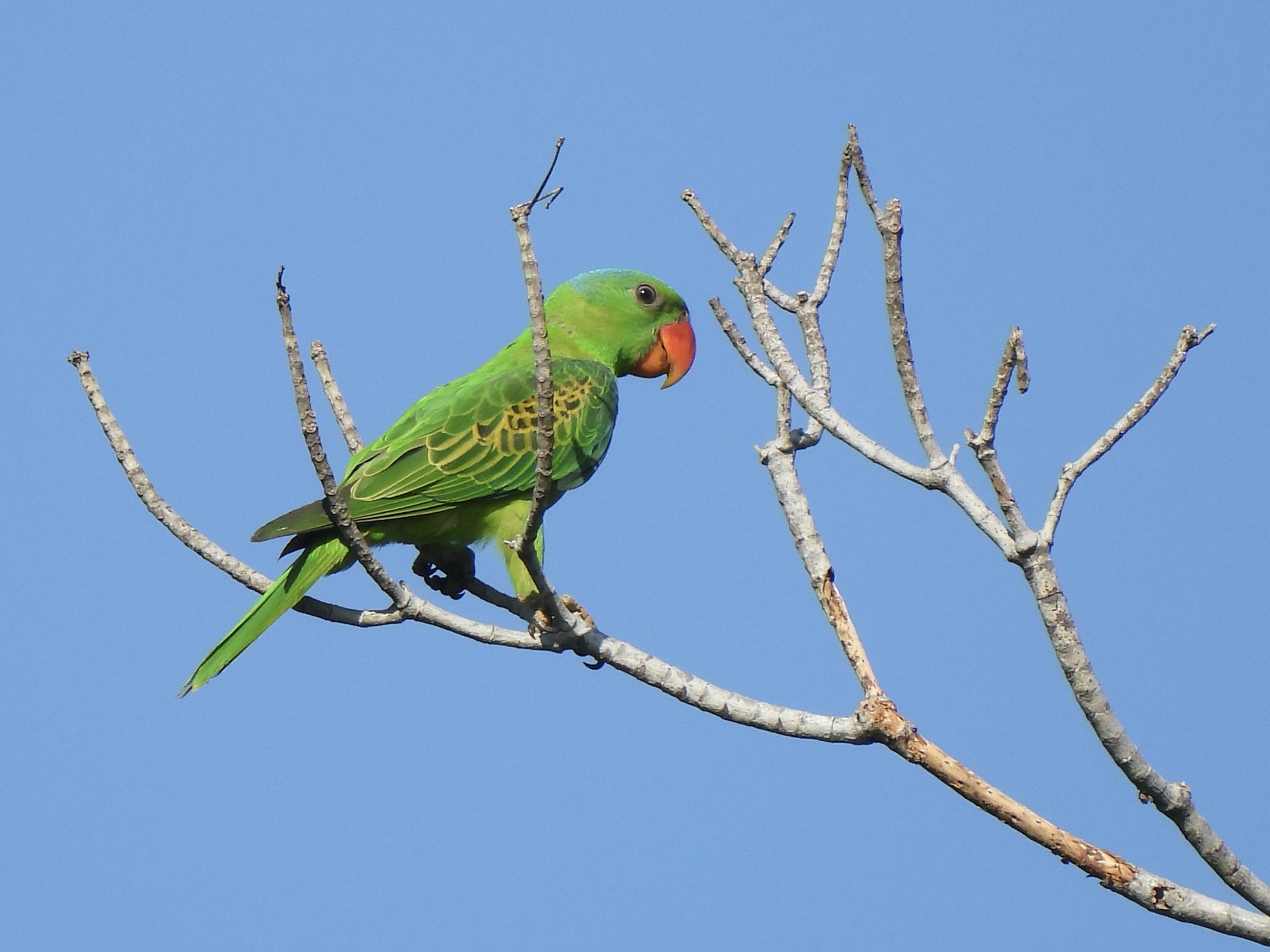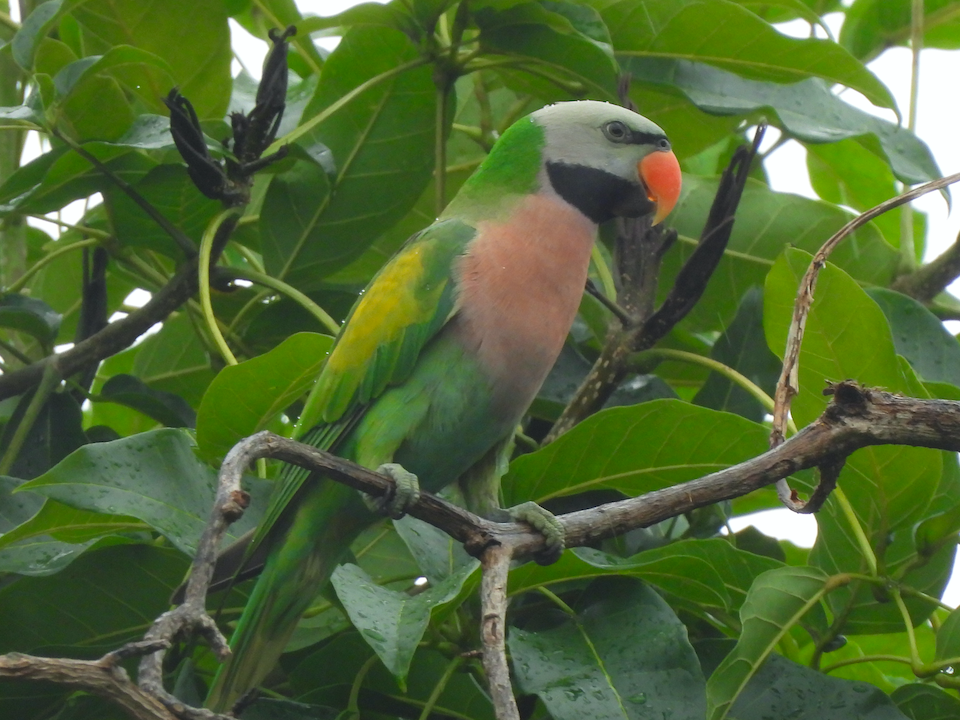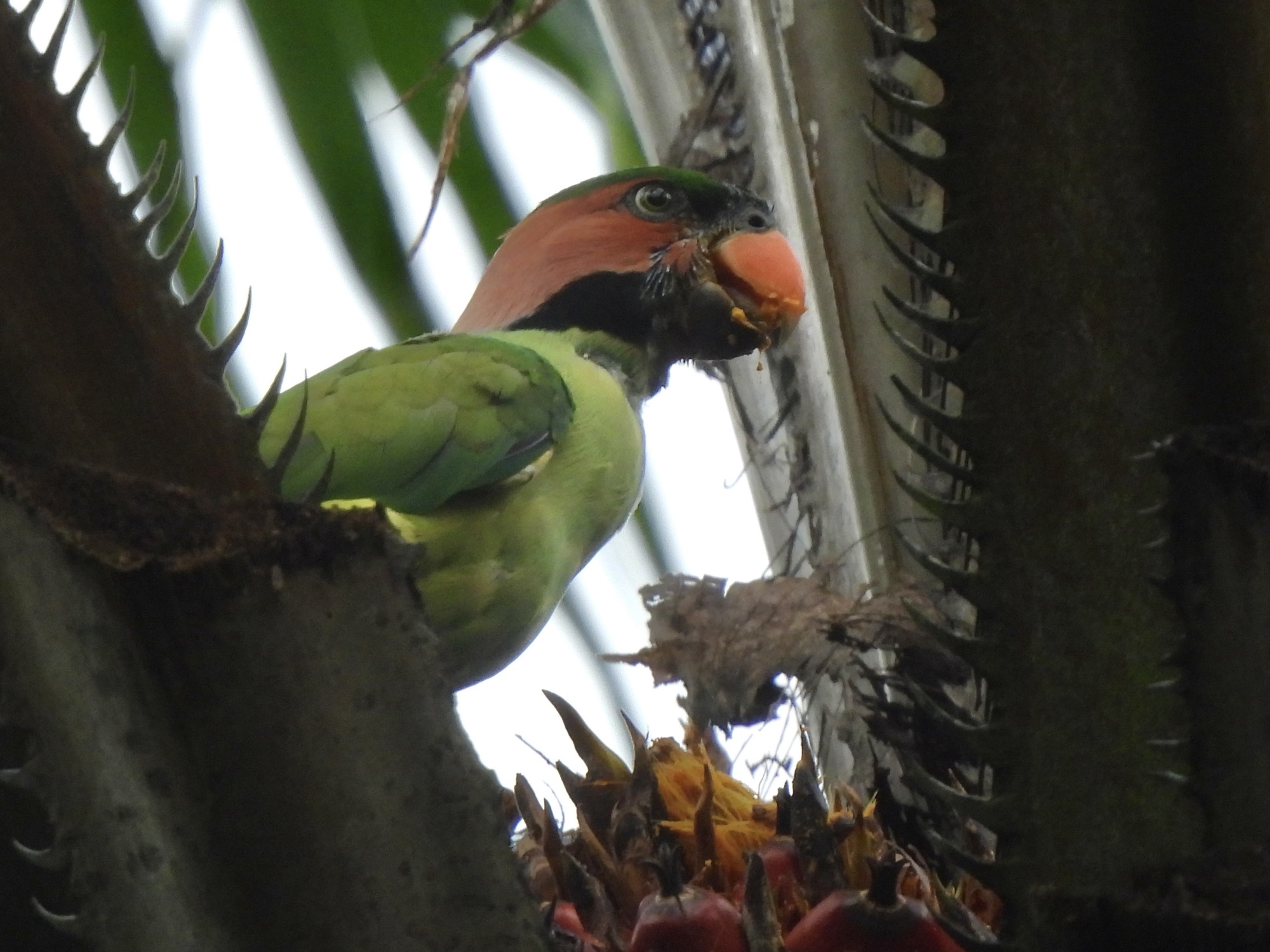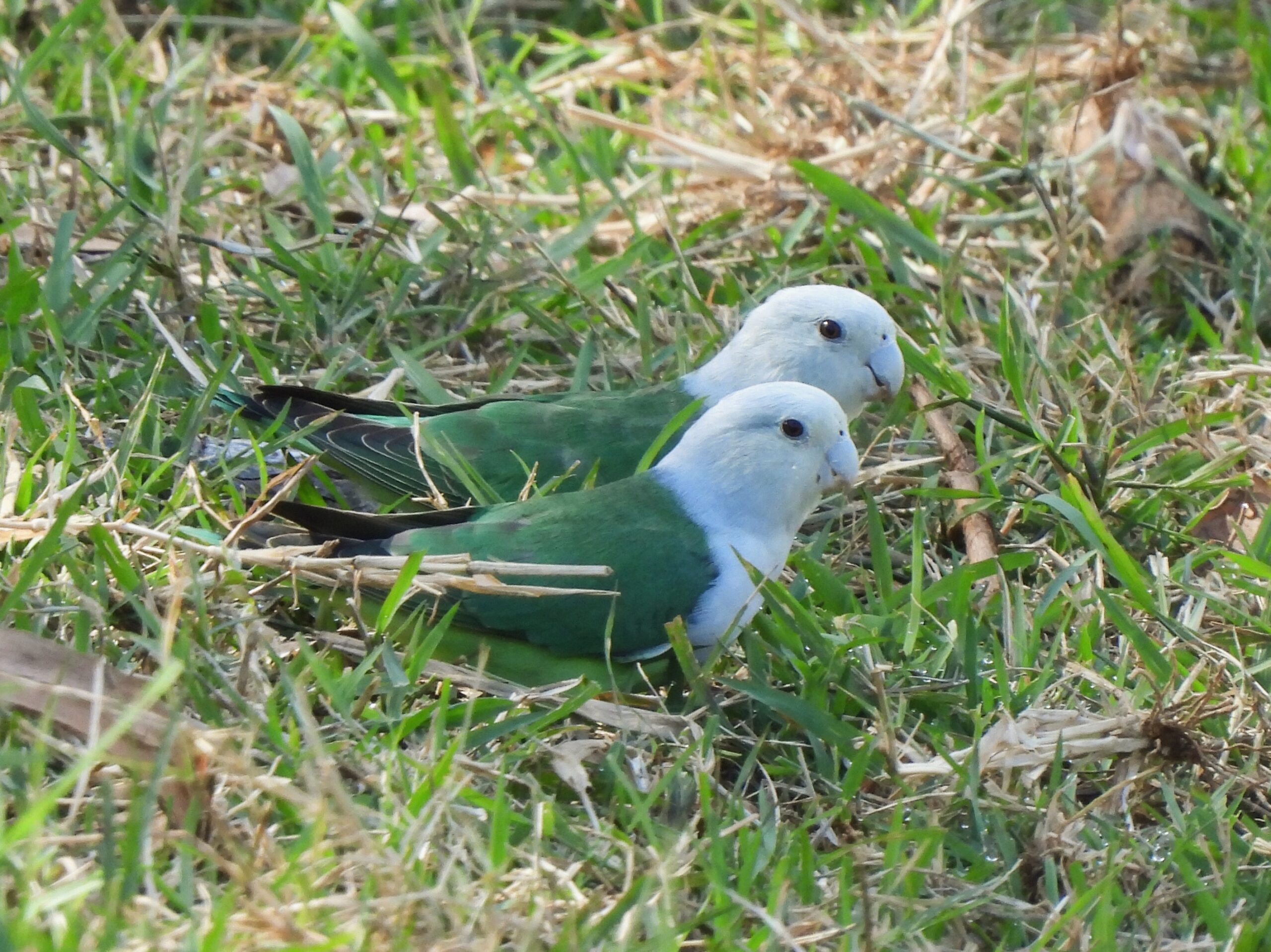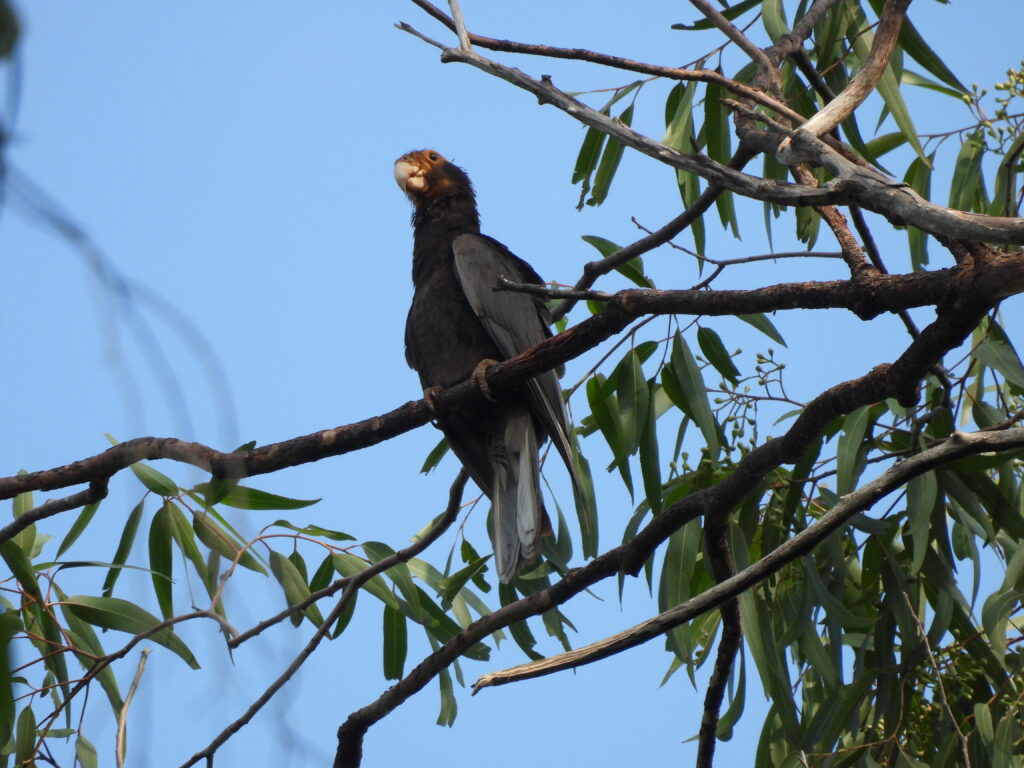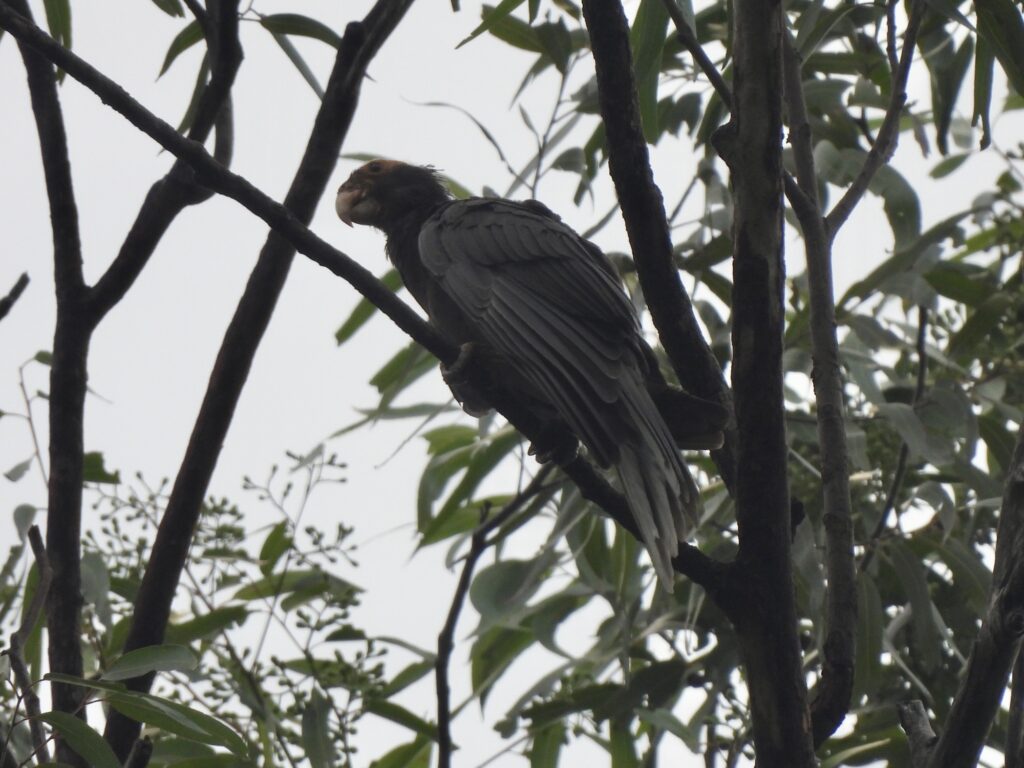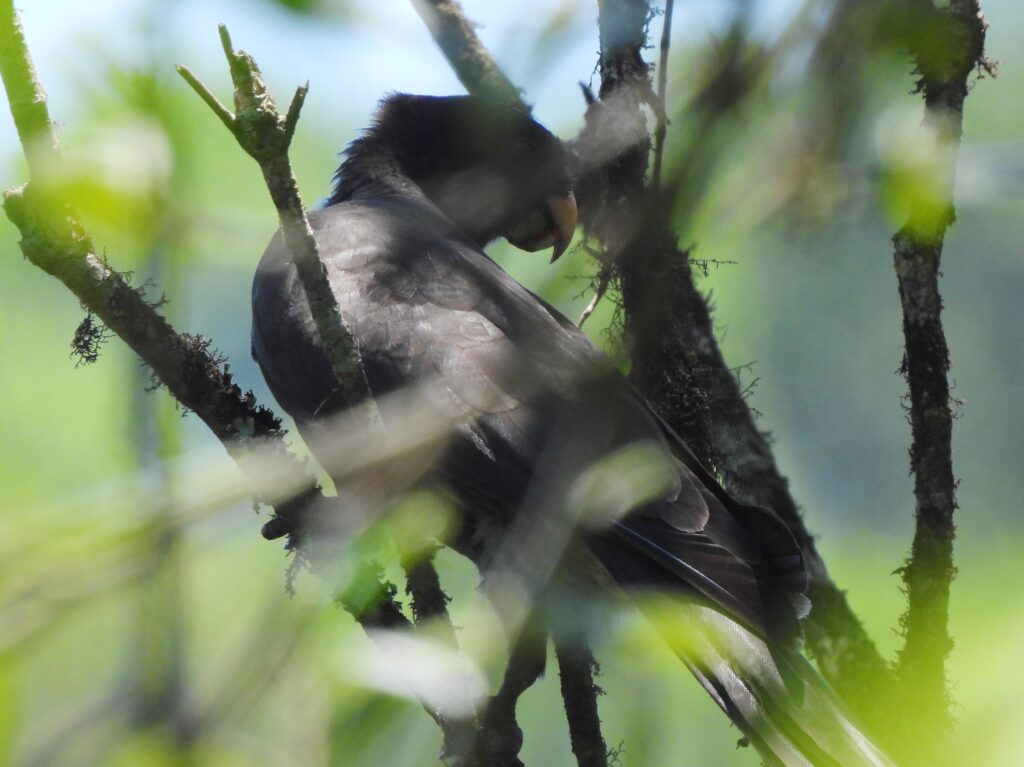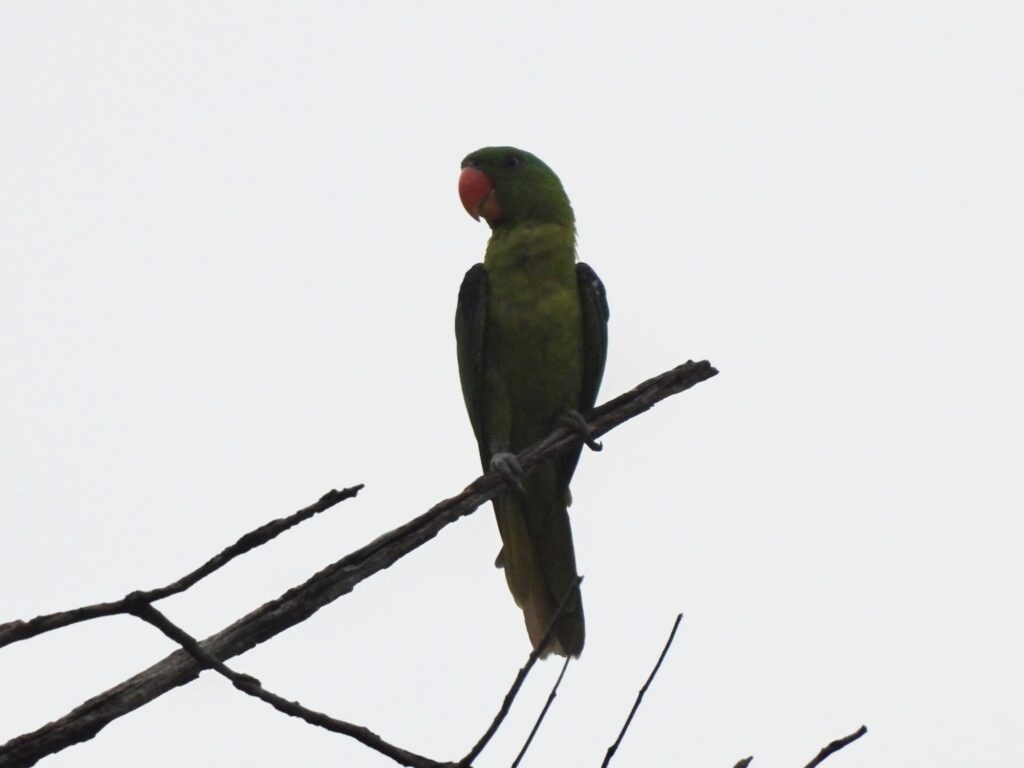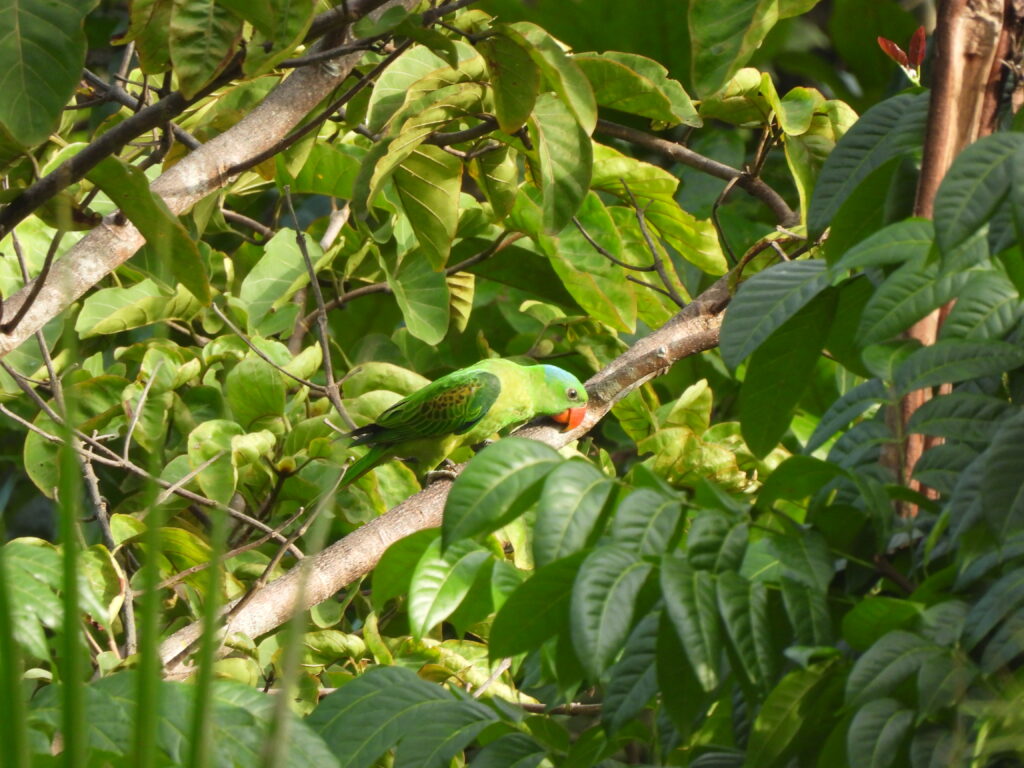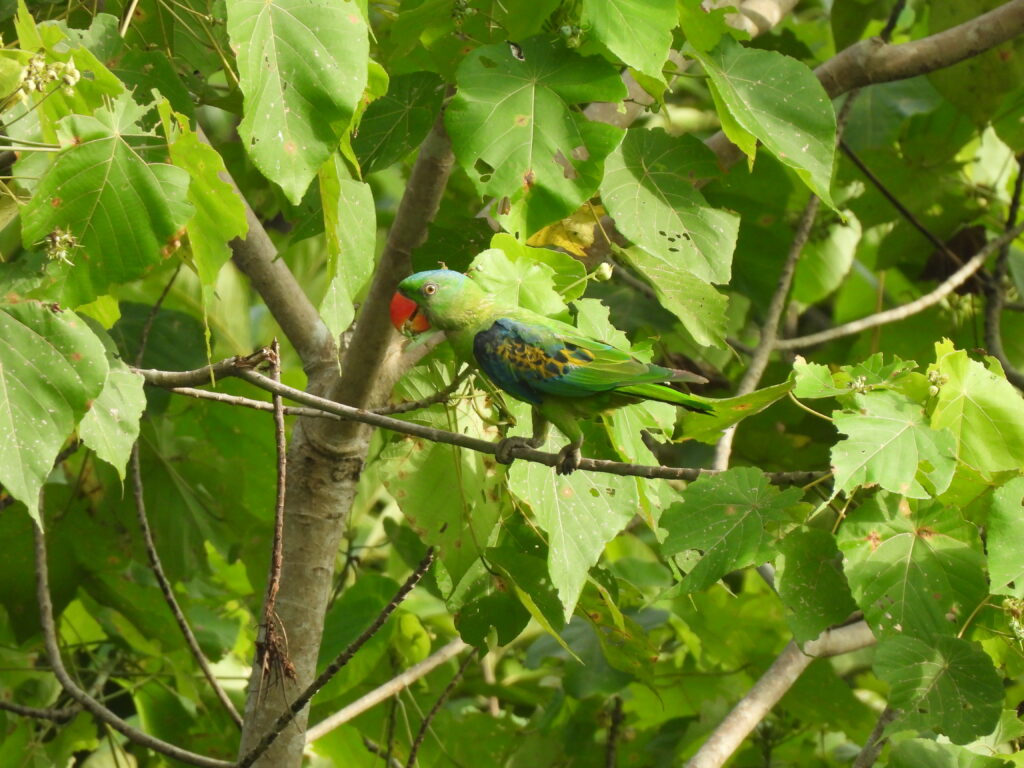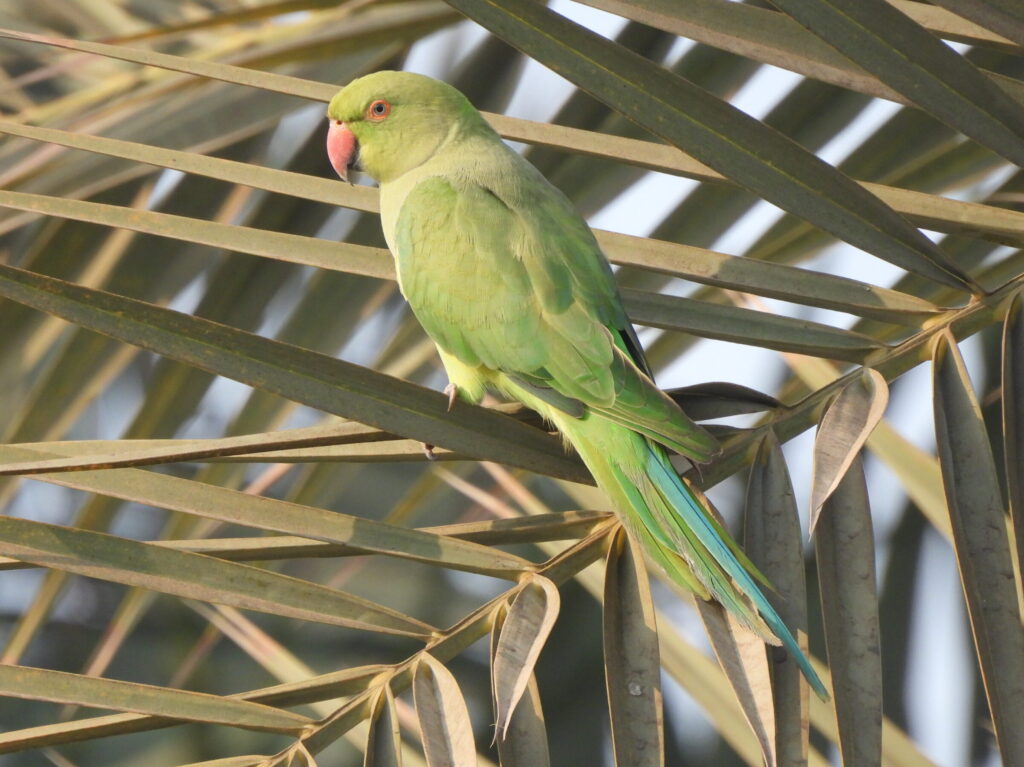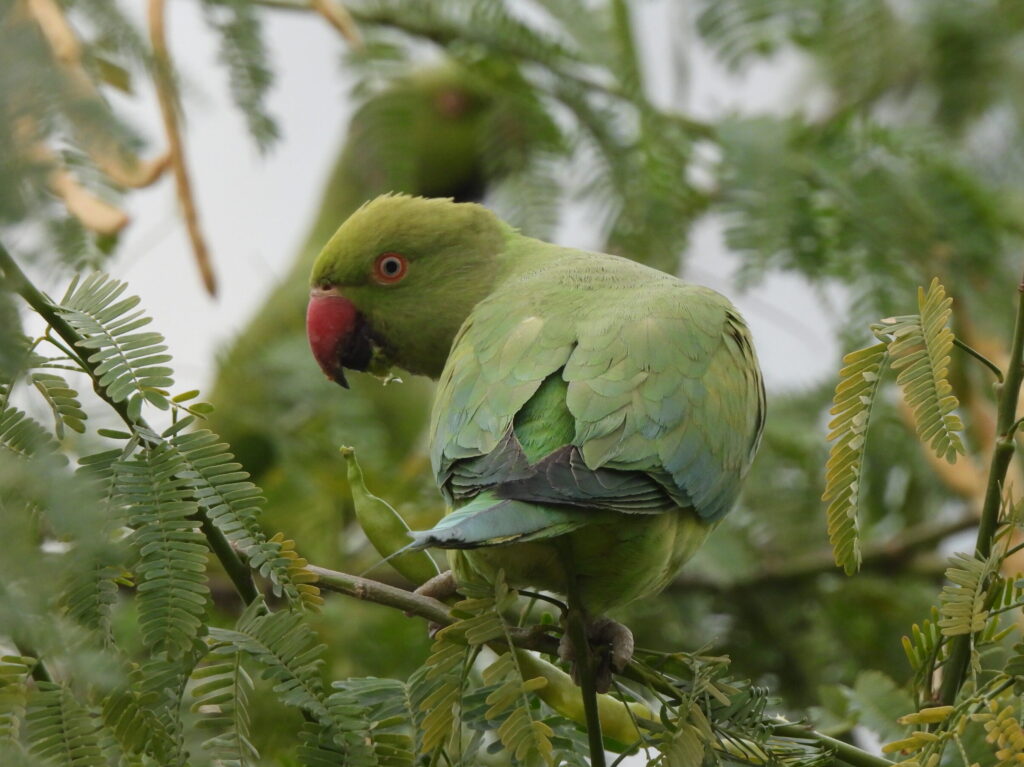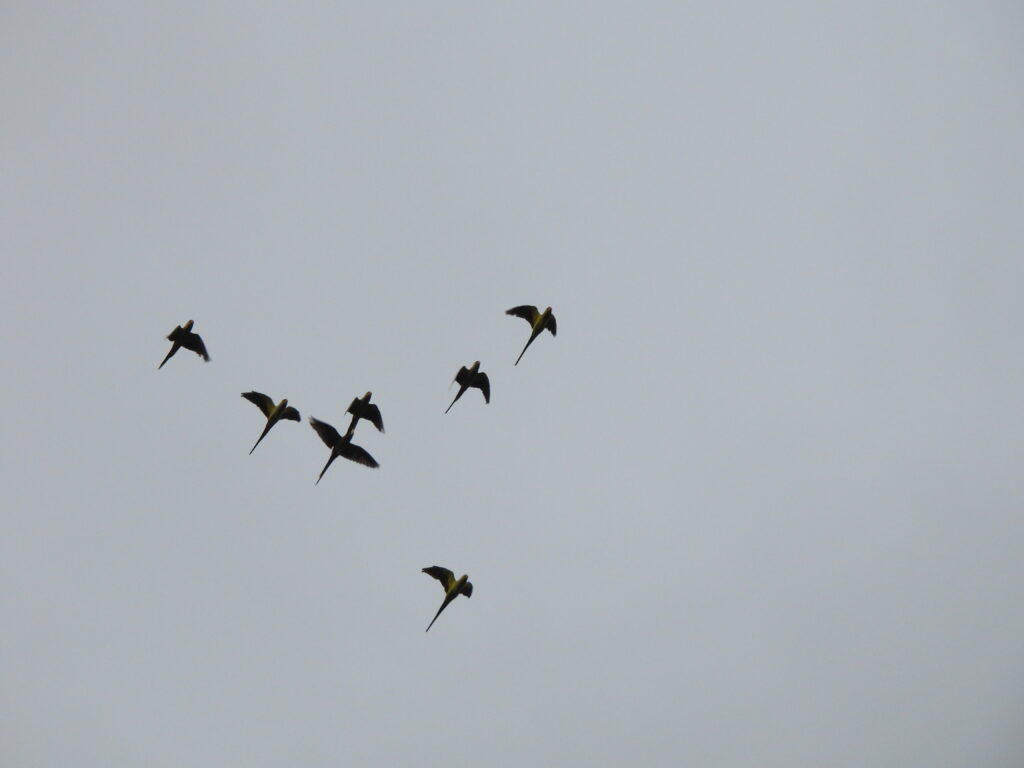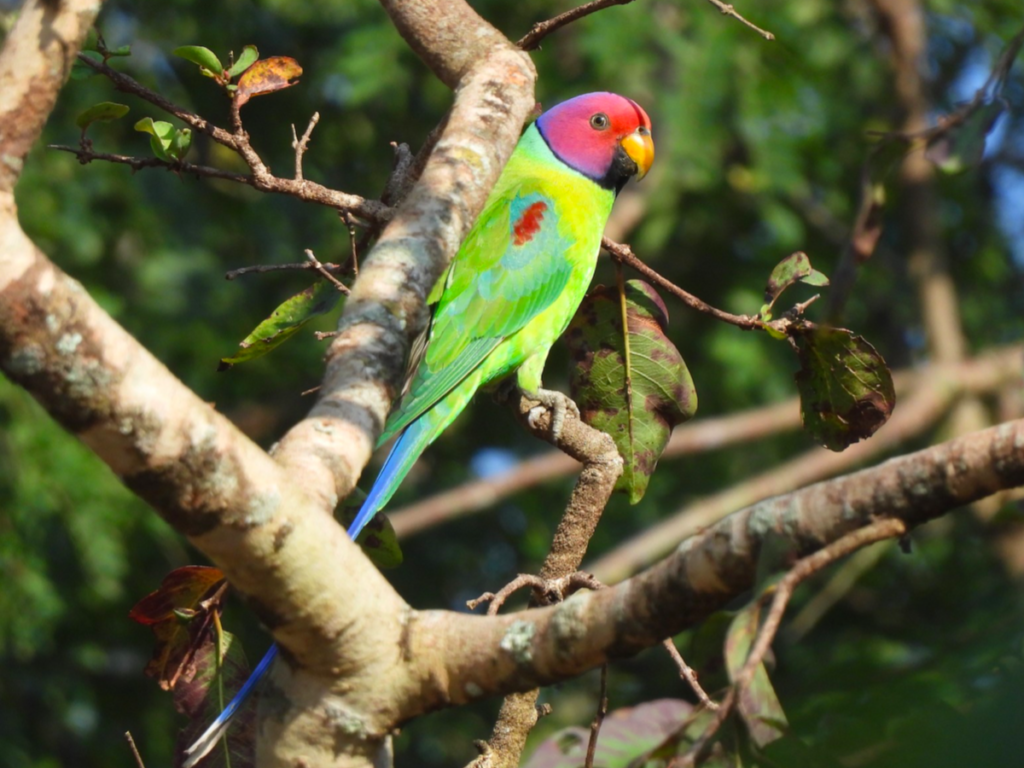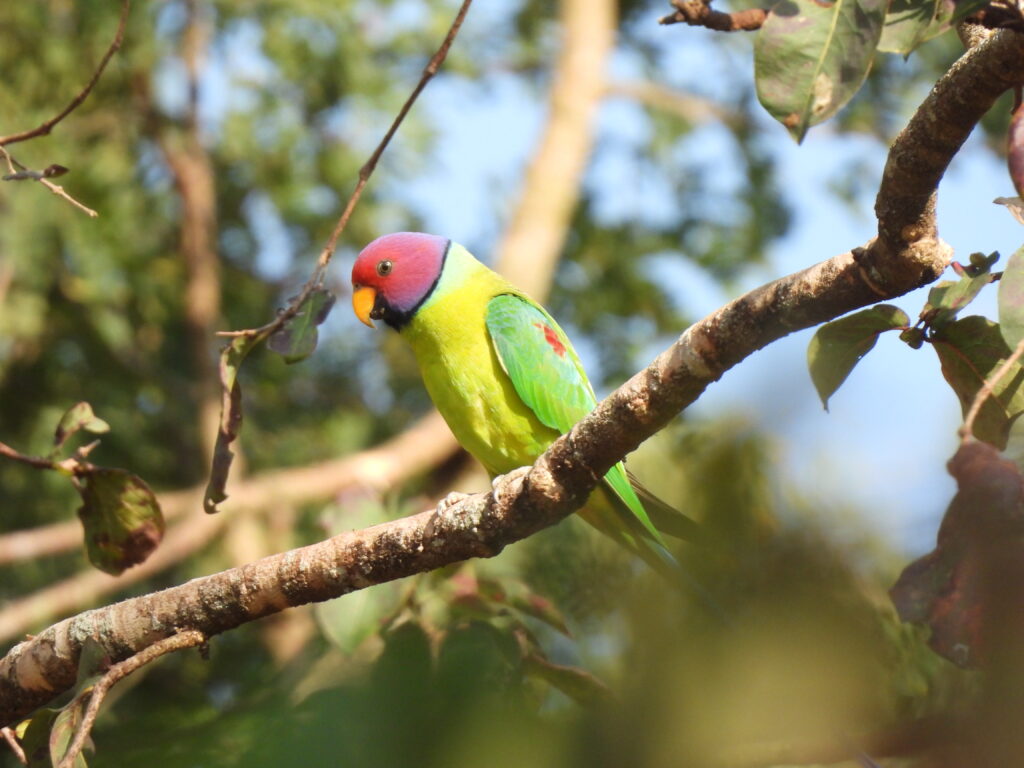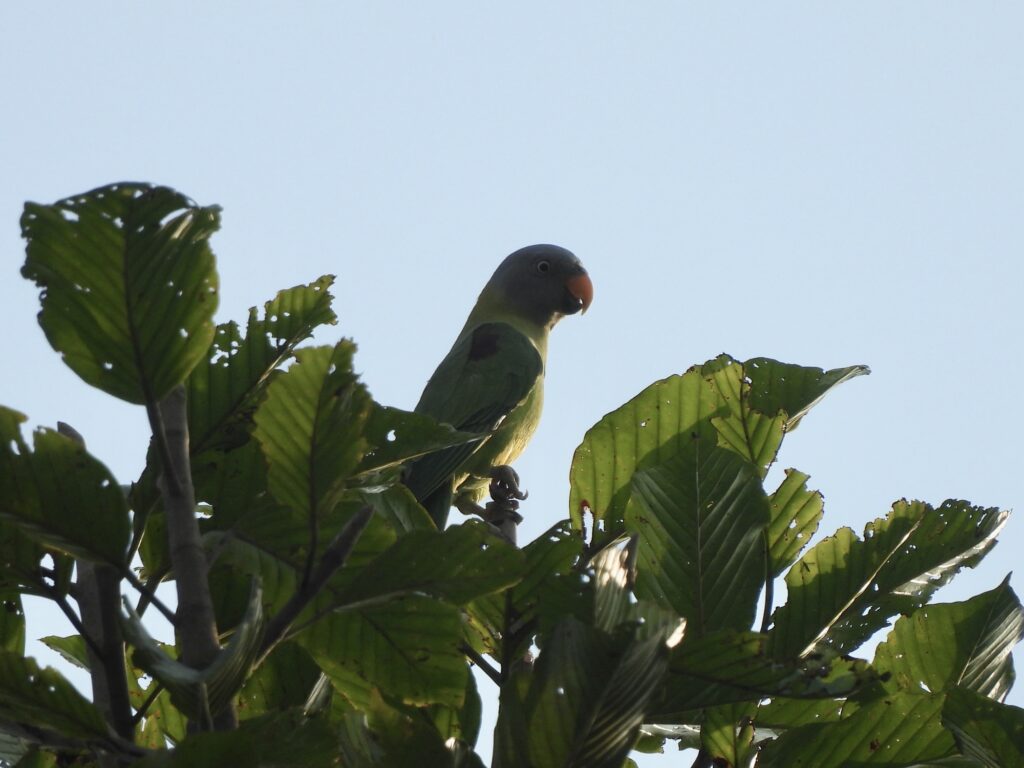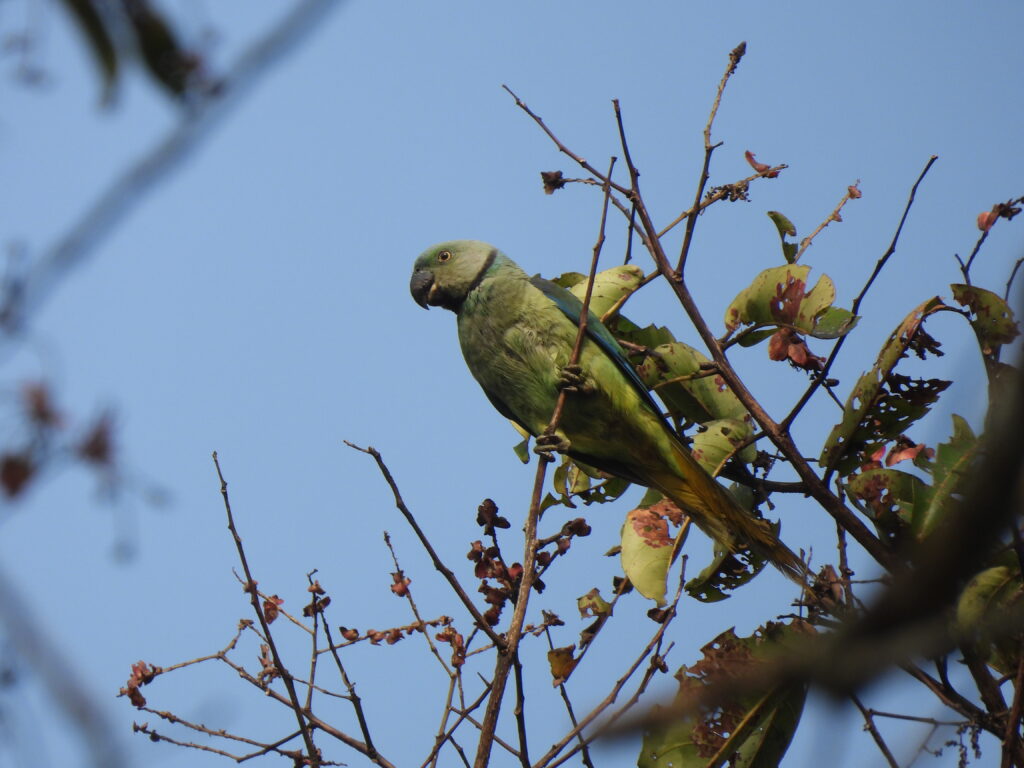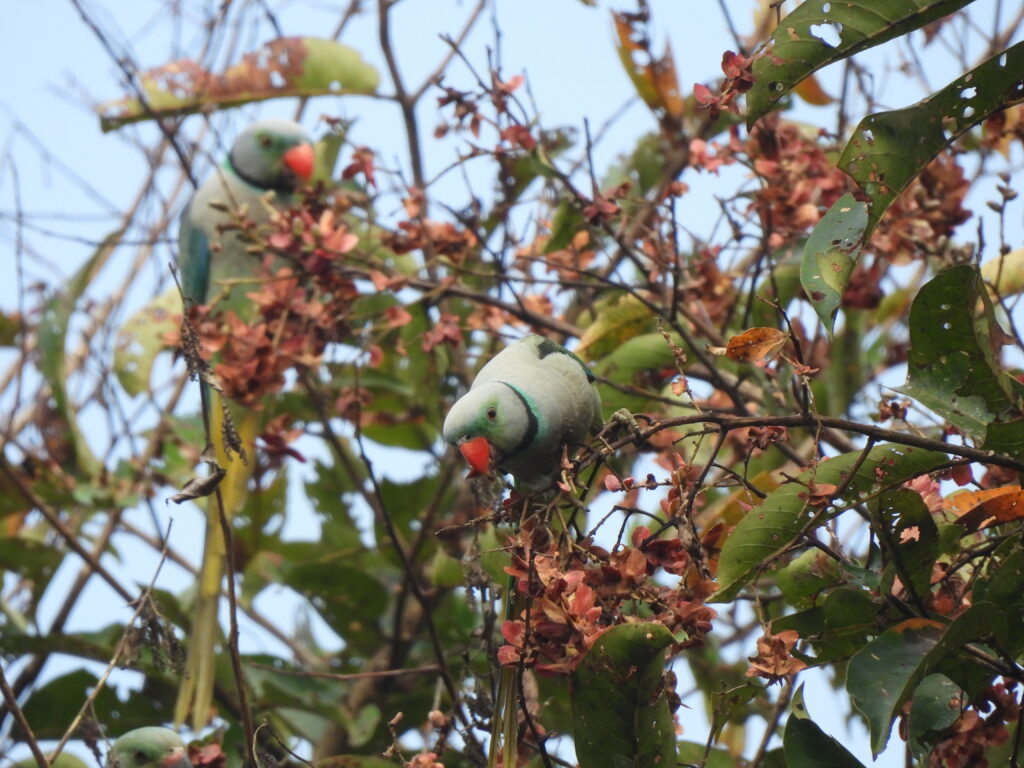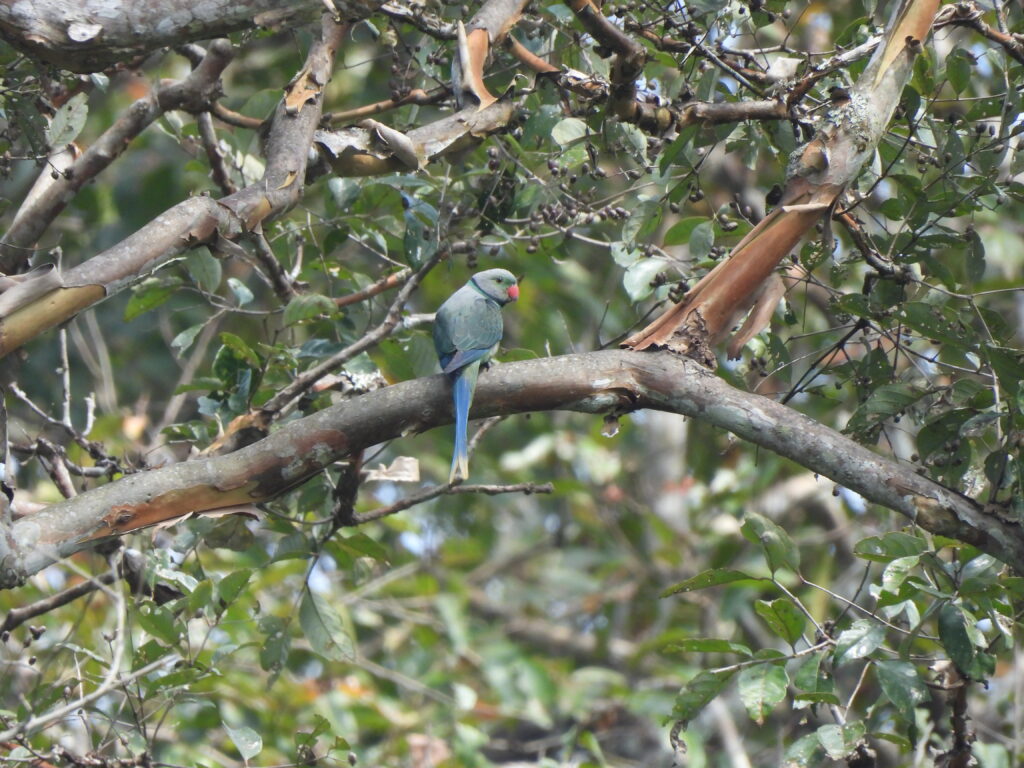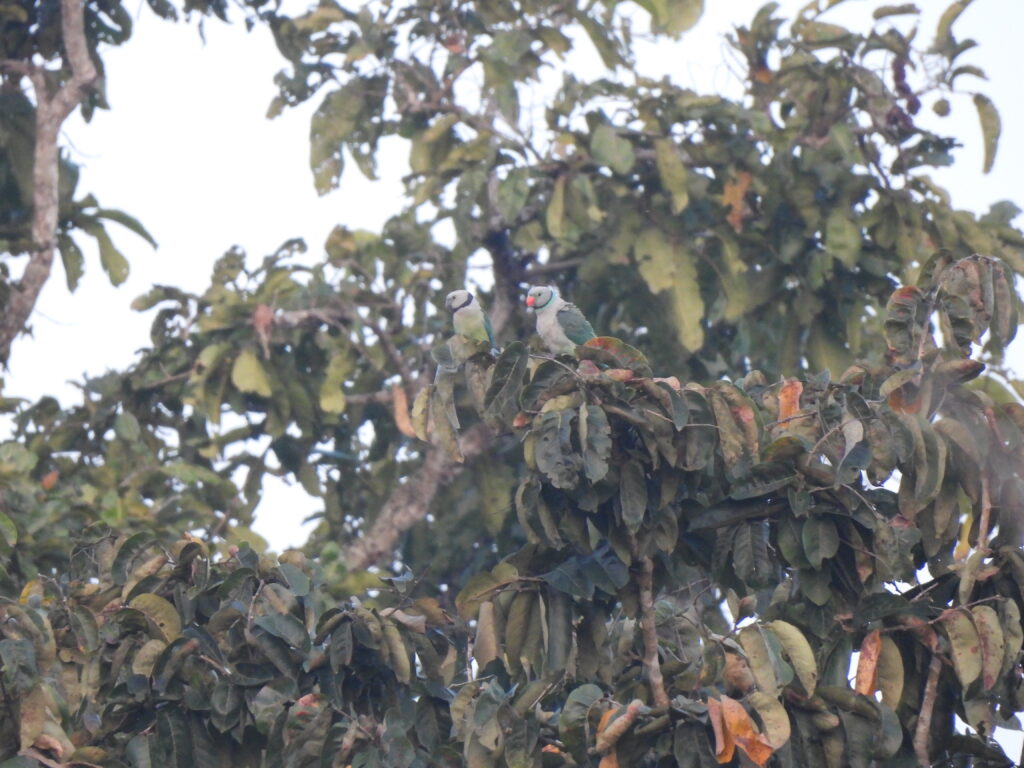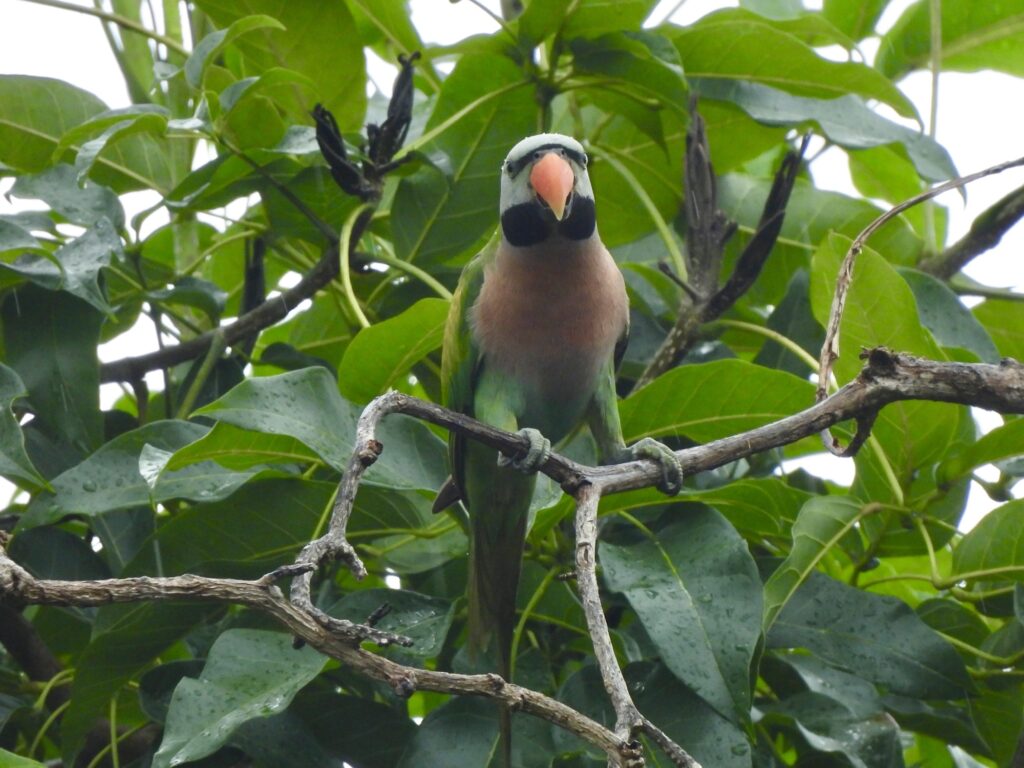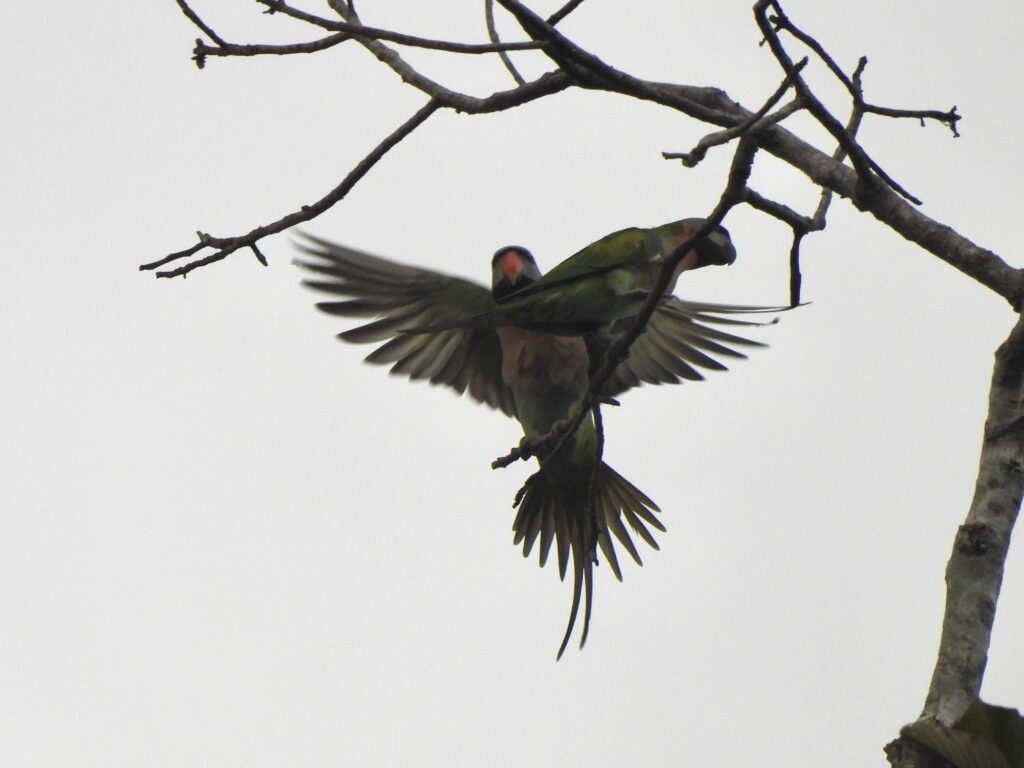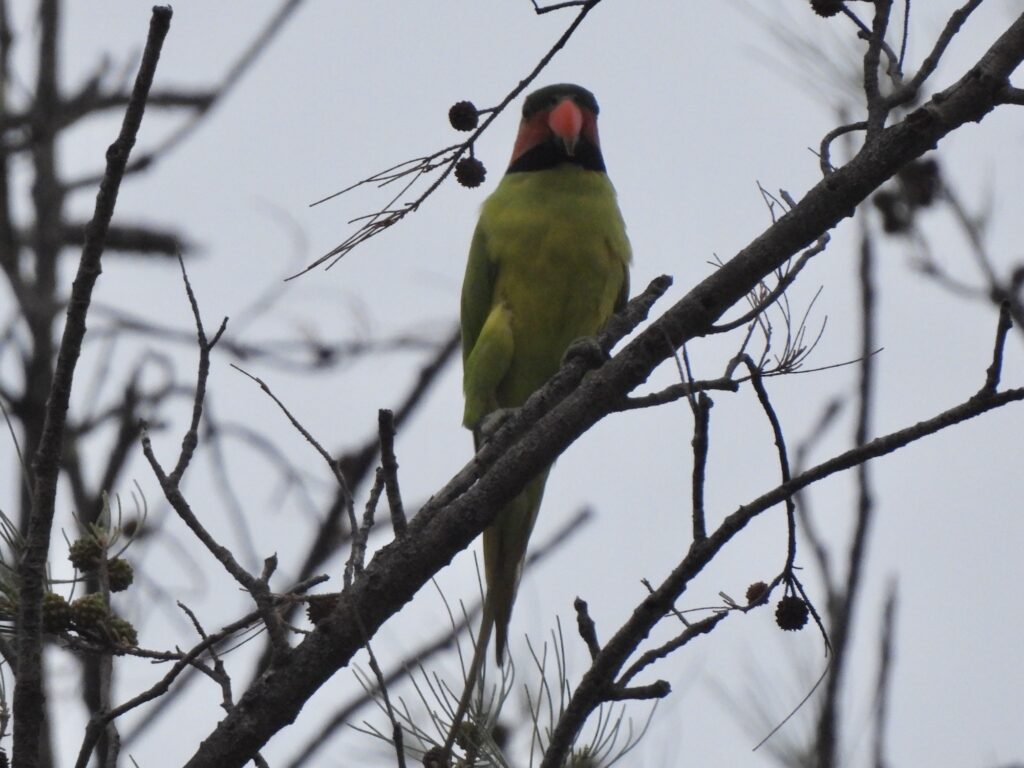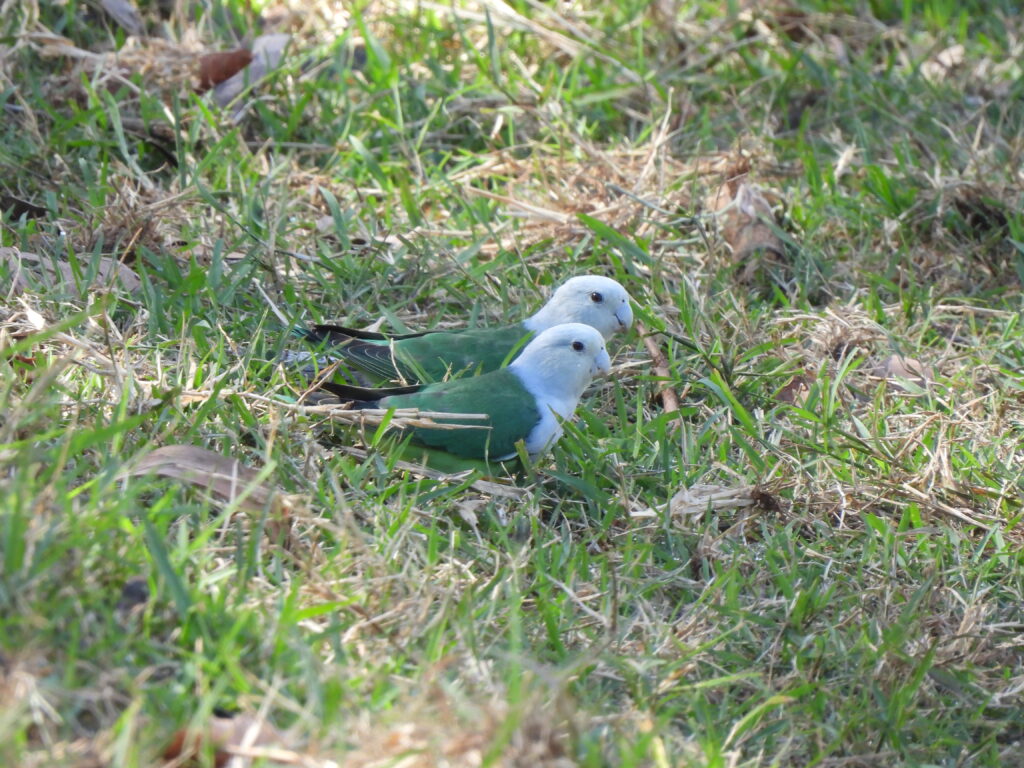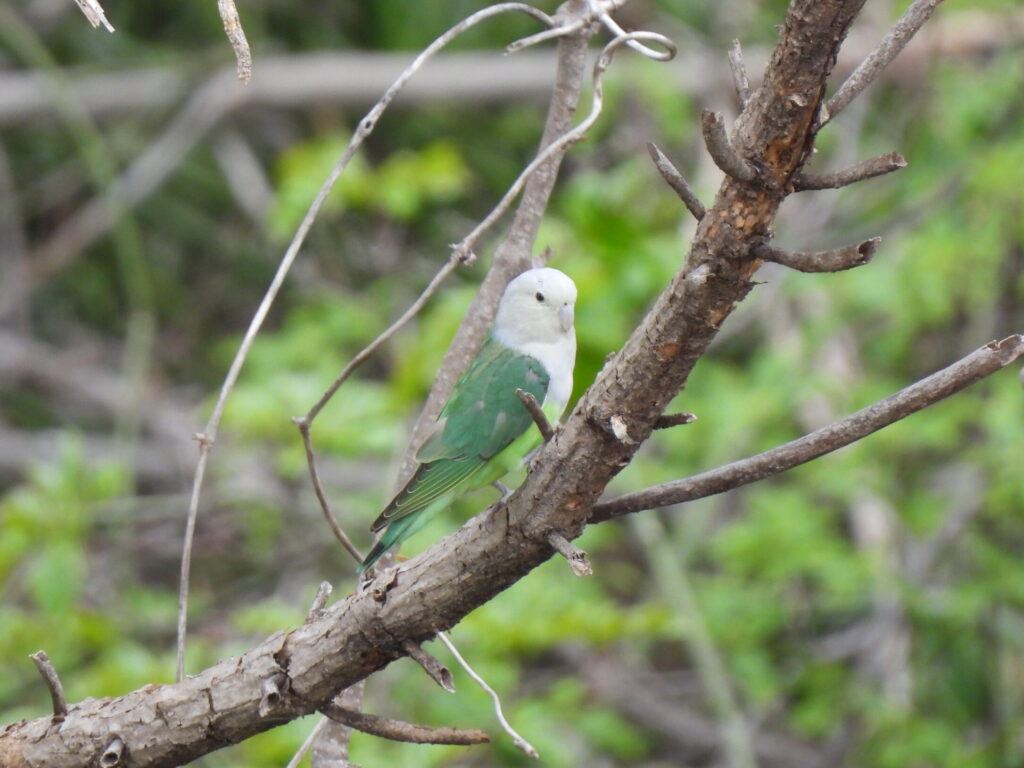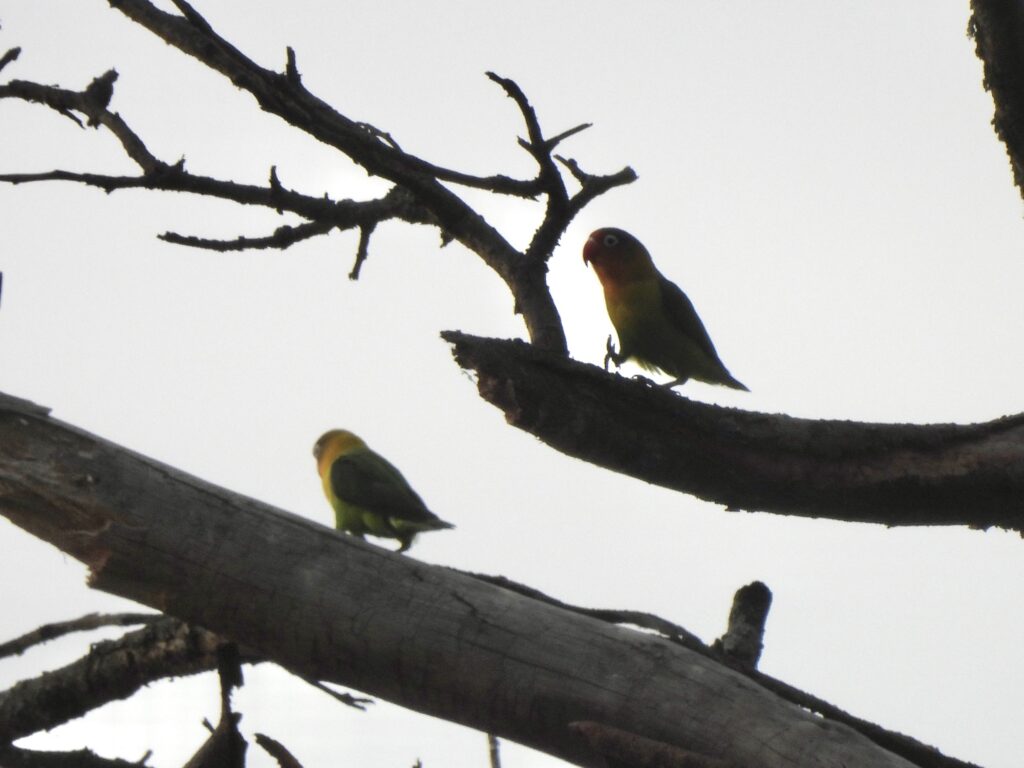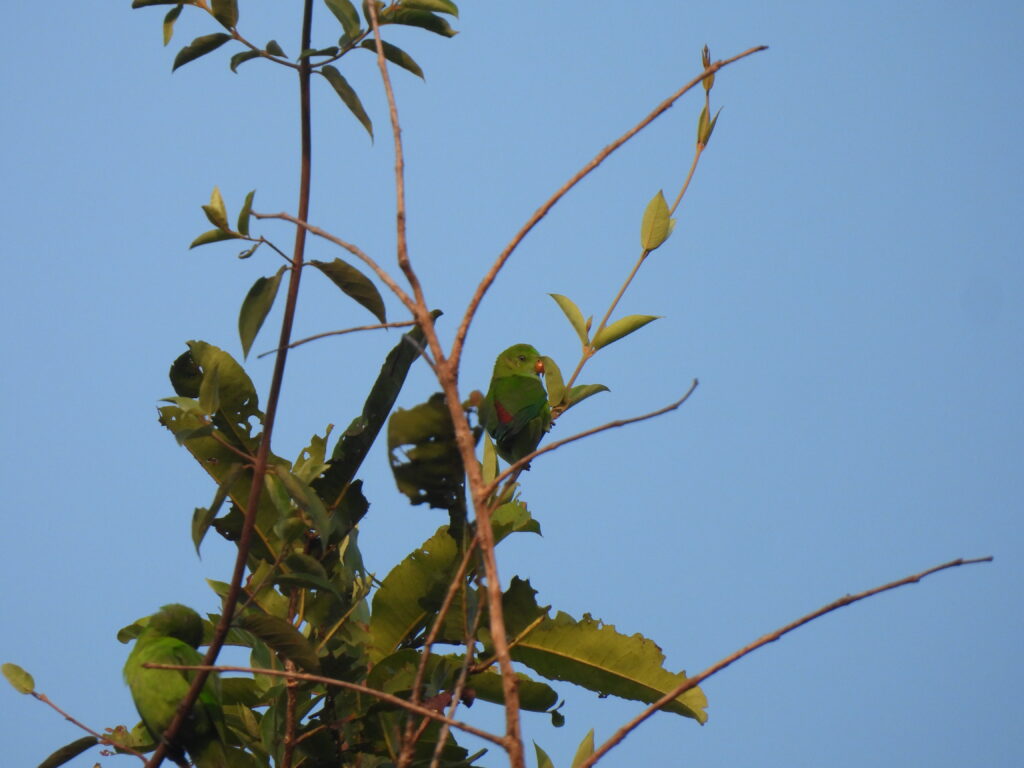The Old World parrots (family Psittaculidae) are a family of birds belonging to the order Psittaciformes. This group is distributed in forested areas of warm regions in the Old World, with greater diversity in Australasia. This group includes lorikeets, lovebirds and many parakeets (although many so-called parakeets belong to the related New World and African parrots), with numerous endemics of island ecosystems and widespread taxa, includes numerous species used as popular pets. Overexploitation for trade and habitat loss have threatened numerous species, causing the extinction of some eight species in recent times and the fall of populations of other species — some of which are very poorly known today. Additionally, their trade and release has given rise to feral populations of different species in urban areas of warm regions worldwide.
The family comprises 187 extant species in 45 genera, generally classified in six subfamilies. The basal subfamily Psittrichasinae includes black-colored parrots of New Guinea genus Psittrichas (1 species) and Madagascar genus Coracopsis (4 species).
The type subfamily Psittaculinae includes parrots mostly distributed along Australasia. The pygmy parrots, the smallest parrots globally, belong to genus Micropsitta (6 species). Genus Alisterus (3 species), Aprosmictus (2 species), Polytelis (3 species), racket-tails of genus Prioniturus (10 species), genus Eclectus (5 species), Geoffroyus (3 species), Psittinus (2 species), Tanygnathus (5 species) and the Old World widespread genus Psittacula (16 species, of which 2 extinct) are part of this clade, as well as three historically extinct genera from the Mascarene islands.
The subfamily Psittacellinae includes tiger parrots of genus Psittacella (4 species), a clade endemic to New Guinea.
The subfamily Platycercinae is endemic to Oceania. The terrestrial genus Pezoporus (2 species), genera Neopsephotus (1 species), Neophema (6 species) and Lathamus (1 species) are endemic to Australia. Genus Prosopeia (3 species) is endemic to Fiji, Eunymphicus (2 species) to New Caledonia and Cyanoramphus (9 species of which 2 extinct) is now best distributed in New Zealand islands. Ringnecks of genus Barnardius (1 species), rosellas of genus Platycercus (6 species), bluebonnets of genus Northiella (2 species) and other parrots of genera Psephotus (1 species), Purpureicephalus (1 species) and Psephotellus (4 species of which 1 extinct) are also endemic to Australia.
The subfamily Agapornithinae includes small, stocky, short-tailed parrots of the Old World. Genus Bolbopsittacus (1 species) is endemic to the Phlippines. Lovebirds of genus Agapornis (9 species) are distributed in Africa. Hanging parrots of genus Loriculus (15 species) are found in the Indian Subcontinent and Southeast Asia.
The subfamily Loriinae is found in Australasia. Fig parrots of genera Nannopsittacus (3 species) and Cyclopsitta (4 species) and budgerigars of genus Melopsittacus (1 species) are the basal birds of this clade. Most other species are commonly known as lorikeets, including genera Oreopsittacus (1 species), Charminetta (1 species), Hypocharmosyna (2 species), Charmosynopsis (2 species), Charmosyna (4 species), Vini (12 species of which 2 possibly extinct), Neopsittacus (2 species), Lorius (6 species), Psitteuteles (1 species), Parvipsitta (2 species), Chalcopsitta (5 species), Glossoptilus (1 species) and Trichoglossus (22 species).
Greater vasa parrot
Coracopsis vasa
Endemic to different woodland ecosystems of Madagscar and the Comoros. Large black parrot that travels in small groups nd emits rough but very loud calls. Some individuals might show a partly bald head. I have seen this species in several forests of Madagascar.
Lesser vasa parrot
Coracopsis nigra
Endemic to Madagascar, with closely related populations in Comoros and Seychelles elevated to the species level. Smaller and smaller billed than the greater vasa parrot, with more musical, high-pitch calls and somewhat larger populations. I have observed this species in several forests of Madagascar.
Blue-naped parrot
Tanygnathus lucionensis
Mainly found in lowland forests of Palawan with populations in other islands of the Philippines and off Borneo. Has a large bright-red bill. It is decreasing throughout its range, including where I have seen it in the Philippines, although has a seemingly healthy introduced population in urban Kota Kinabalu in Borneo.
Rose-ringed parakeet
Psittacula krameri
Native to open woodlands, croplands and urban areas of the Indian Subcontinent and the Sahel, being the only member of its genus native to the African mainland. Its popularity as a pet and adaptability have aided it to be released and colonize warm areas in all continents. I have encountered birds in their native range in India but often see numbers of the introduced populations in Alicante and Valencia.
Plum-headed parakeet
Psittacula cyanocephala
Endemic to the Indian Subcontinent, where it is well spread along most wooded habitats. Only males show the bright pink head and shoulders, whereas females have a darker hue to their head and a yellow collar. I have seen this beautiful parakeet in India.
Blossom-headed parakeet
Psittacula roseata
Scarce parakeet of lowland open forests and edge of Southeast Asia to Northeast India, locally close to rural villages. Also known as rosy-headed parakeet, only males have a rosy or blossom head, which is duller, almost gray in females. Habitat loss and trapping are particularly threatening populations in Vietnam, where I saw this species.
Blue-winged parakeet
Psittacula columboides
Endemic to the Western Ghats forests. It is also known as the Malabar parakeet. My personal favorite parakeet: both sexes are uniquely tinged in blue but males have a fantastic electric blue and gray look with a red upper bill. I have seen this stunner on my trip to India.
Red-breasted parakeet
Psittacula alexandri
Attractive parakeet of lowland forest and edge of Southeast Asia and Java. The breast is rather pink and the gray face gives a moustached, goggled appearance with its black gorge and lorum. Only males feature a bright red upper bill. I have seen this species in Cambodia, plus in its introduced range in the gardens of Singapore.
Long-tailed parakeet
Psittacula longicauda
Scarce, threatened parrot of lowland forests of the Malay Peninsula, Borneo and Sumatra, with endemic forms in the Andaman and Enggano Islands. Uniquely patterned, all full lime green with black lorum and throat and reddish cheeks — to a larger extent in males — and a namesake particularly long tail. I have seen this species in Singapore and Borneo.
Gray-headed lovebird
Agapornis canus
Endemic to Madagascar dry forests and open woodlands. Unique among renowned lovebirds for males showing an entirely light gray head, which is green in females. I have seen little numbers of this species during my time in Madagascar, where the species seems to be commonly traded.
Vernal hanging parrot
Loriculus vernalis
Diminutive short-tailed parrot found in a variety of wooded areas of Southeast Asia to the Western Ghats. Very high-pitched, piercing flight calls are indicative of hanging parrots, and red in both bill and rump are distinctive features of the species. I have observed this species in Vietnam, Thailand and India.

